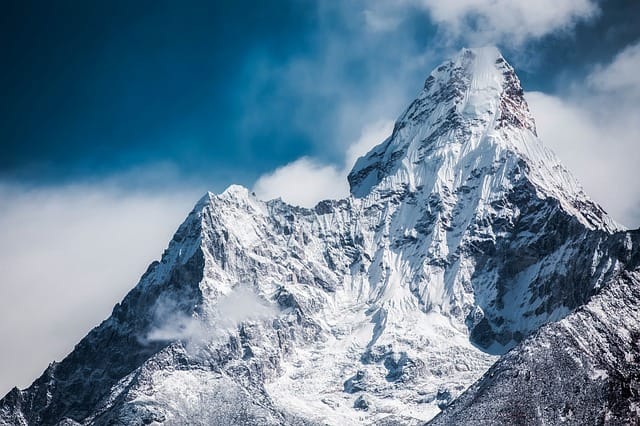Now Hindu Kush Himalaya (HKH) region also added to the series of the regions of ice loss such as the North Pole, Greenland, and Antarctica. According to the landmark report, it is “the climate crisis you haven’t heard of” as mentioned by the lead author. It is indeed shocking that one-third of the vast ice fields of the Hindu Kush Himalaya (HKH) region doomed to melt because of climate change. This ice loss will endanger the life of nearly 2 billion people by 2100.
According to the new report from the International Center for Integrated Mountain Development (ICIMOD), even if the policymakers take the immediate action as per the urgent warnings of the scientists to meet the target of 1.5C of Paris Agreement 2015, still about 36% of the glaciers of the region will melt disrupting rivers across Asia. The report found that the loss of ice will soar to two-thirds if emissions continue.
The HKH region, the home to Mount Everest will lose about half of its ice irrespective of the case that the carbon emissions reduced by half and the rise in global average temperature hits 2°C. The unabated carbon emissions will also result in soaring global average temperature at 4-5°C, and two-thirds of glaciers will melt in the so-called “Third Pole” of the world.
The HKH region is the planet’s “third pole” that runs from Afghanistan to Myanmar, harboring ice more than anywhere outside Arctic and Antarctica.
The consequences will be worse for the 1.9 billion people reliant on regional resources. The lead author Philippus Wester of ICIMOD said, “This is the climate crisis you haven’t heard of.” He added “In the best of possible worlds, if we get really ambitious [in tackling climate change], even then we will lose one-third of the glaciers and be in trouble. That for us was the shocking finding.”
Around 250 million people, who live in the Hindu Kush-Himalaya (HKH) region, glaciers work as their critical water store, and 1.65 billion people depend on the great rivers that flow from the peaks into India, Pakistan, China, and other nations.
The flows in the rivers will increase due to melting glaciers through 2050 to 2060. According to Wester, there will be a risk of bursting banks of high-altitude lakes and engulfing communities. However, river flows will go into decline from the 2060s affecting the Indus and central Asian rivers mostly. “Those areas will be hard hit,” said Wester.
“Global warming is on track to transform the frigid, glacier-covered mountain peaks of the HKH cutting across eight countries to bare rocks in a little less than a century,” said Wester.
These predictions are mainly alarming for mountainous regions like the HKH—which spans Afghanistan, Pakistan, Bangladesh, Bhutan, China, India, Myanmar, and Nepal.
“Impacts on people in the region, already one of the world’s most fragile and hazard-prone mountain regions, will range from worsened air pollution to an increase in extreme weather events,” Wester said explaining, “But it’s the projected reductions in pre-monsoon river flows and changes in the monsoon that will hit hardest, throwing urban water systems and food and energy production off kilter.”
More than 350 researchers and policy experts from 22 countries and 185 organizations got involved over the course of five years in The Hindu Kush Himalaya Assessment, the first comprehensive analysis of its kind for the region. It was styled after the Intergovernmental Panel on Climate Change (IPCC) and recently warned that without “rapid, far-reaching, and unprecedented” systemic changes, global warming caused by human activities could reach 1.5°C around 2040.
Eklabya Sharma, deputy director general of ICIMOD, said “There are rocky times ahead for the region: between now and 2080, the environmental, economic, and social conditions laid out in the report could go downhill.”
Political tensions between neighboring nations such as India and Pakistan may deteriorate. “Because many of the disasters and sudden changes will play out across country borders, conflict among the region’s countries could easily flare up,” Eklabya noted. “But the future doesn’t have to be bleak if governments work together to turn the tide against melting glaciers and the myriad impacts they unleash.”






